Entry Database : PDB / ID : 5tpaTitle Structure of the human GluN1/GluN2A LBD in complex with compound 9 (GNE3500) (Glutamate receptor ionotropic, NMDA ...) x 2 Keywords / / / / / Function / homology Function Domain/homology Component
/ / / / / / / / / / / / / / / / / / / / / / / / / / / / / / / / / / / / / / / / / / / / / / / / / / / / / / / / / / / / / / / / / / / / / / / / / / / / / / / / / / / / / / / / / / / / / / / / / / / / / / / / / / / / / / / / / / / / / / / / / / / / Biological species Homo sapiens (human)Method / / / Resolution : 2.48 Å Authors Wallweber, H.J.A. / Lupardus, P.J. Journal : ACS Med Chem Lett / Year : 2017Title : GluN2A-Selective Pyridopyrimidinone Series of NMDAR Positive Allosteric Modulators with an Improved in Vivo Profile.Authors: Villemure, E. / Volgraf, M. / Jiang, Y. / Wu, G. / Ly, C.Q. / Yuen, P.W. / Lu, A. / Luo, X. / Liu, M. / Zhang, S. / Lupardus, P.J. / Wallweber, H.J. / Liederer, B.M. / Deshmukh, G. / Plise, ... Authors : Villemure, E. / Volgraf, M. / Jiang, Y. / Wu, G. / Ly, C.Q. / Yuen, P.W. / Lu, A. / Luo, X. / Liu, M. / Zhang, S. / Lupardus, P.J. / Wallweber, H.J. / Liederer, B.M. / Deshmukh, G. / Plise, E. / Tay, S. / Wang, T.M. / Hanson, J.E. / Hackos, D.H. / Scearce-Levie, K. / Schwarz, J.B. / Sellers, B.D. History Deposition Oct 20, 2016 Deposition site / Processing site Revision 1.0 Nov 30, 2016 Provider / Type Revision 1.1 Dec 28, 2016 Group Revision 1.2 Feb 1, 2017 Group Revision 1.3 Oct 9, 2024 Group / Database references / Structure summaryCategory chem_comp_atom / chem_comp_bond ... chem_comp_atom / chem_comp_bond / database_2 / pdbx_entry_details / pdbx_modification_feature Item / _database_2.pdbx_database_accession
Show all Show less
 Yorodumi
Yorodumi Open data
Open data Basic information
Basic information Components
Components Keywords
Keywords Function and homology information
Function and homology information Homo sapiens (human)
Homo sapiens (human) X-RAY DIFFRACTION /
X-RAY DIFFRACTION /  SYNCHROTRON /
SYNCHROTRON /  MOLECULAR REPLACEMENT / Resolution: 2.48 Å
MOLECULAR REPLACEMENT / Resolution: 2.48 Å  Authors
Authors Citation
Citation Journal: ACS Med Chem Lett / Year: 2017
Journal: ACS Med Chem Lett / Year: 2017 Structure visualization
Structure visualization Molmil
Molmil Jmol/JSmol
Jmol/JSmol Downloads & links
Downloads & links Download
Download 5tpa.cif.gz
5tpa.cif.gz PDBx/mmCIF format
PDBx/mmCIF format pdb5tpa.ent.gz
pdb5tpa.ent.gz PDB format
PDB format 5tpa.json.gz
5tpa.json.gz PDBx/mmJSON format
PDBx/mmJSON format Other downloads
Other downloads 5tpa_validation.pdf.gz
5tpa_validation.pdf.gz wwPDB validaton report
wwPDB validaton report 5tpa_full_validation.pdf.gz
5tpa_full_validation.pdf.gz 5tpa_validation.xml.gz
5tpa_validation.xml.gz 5tpa_validation.cif.gz
5tpa_validation.cif.gz https://data.pdbj.org/pub/pdb/validation_reports/tp/5tpa
https://data.pdbj.org/pub/pdb/validation_reports/tp/5tpa ftp://data.pdbj.org/pub/pdb/validation_reports/tp/5tpa
ftp://data.pdbj.org/pub/pdb/validation_reports/tp/5tpa Links
Links Assembly
Assembly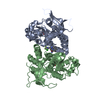
 Components
Components Homo sapiens (human) / Gene: GRIN2A, NMDAR2A / Production host:
Homo sapiens (human) / Gene: GRIN2A, NMDAR2A / Production host: 
 Homo sapiens (human) / Gene: GRIN1, NMDAR1 / Production host:
Homo sapiens (human) / Gene: GRIN1, NMDAR1 / Production host: 
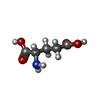

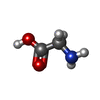




 X-RAY DIFFRACTION / Number of used crystals: 1
X-RAY DIFFRACTION / Number of used crystals: 1  Sample preparation
Sample preparation SYNCHROTRON / Site:
SYNCHROTRON / Site:  ALS
ALS  / Beamline: 5.0.2 / Wavelength: 1 Å
/ Beamline: 5.0.2 / Wavelength: 1 Å Processing
Processing MOLECULAR REPLACEMENT / Resolution: 2.48→72.69 Å / Cor.coef. Fo:Fc: 0.943 / Cor.coef. Fo:Fc free: 0.913 / Rfactor Rfree error: 0 / SU R Cruickshank DPI: 0.466 / Cross valid method: THROUGHOUT / σ(F): 0 / SU R Blow DPI: 0.507 / SU Rfree Blow DPI: 0.267 / SU Rfree Cruickshank DPI: 0.267
MOLECULAR REPLACEMENT / Resolution: 2.48→72.69 Å / Cor.coef. Fo:Fc: 0.943 / Cor.coef. Fo:Fc free: 0.913 / Rfactor Rfree error: 0 / SU R Cruickshank DPI: 0.466 / Cross valid method: THROUGHOUT / σ(F): 0 / SU R Blow DPI: 0.507 / SU Rfree Blow DPI: 0.267 / SU Rfree Cruickshank DPI: 0.267  Movie
Movie Controller
Controller



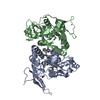
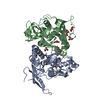
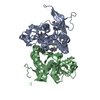
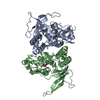
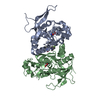

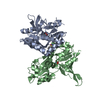
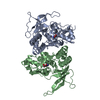
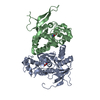
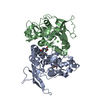
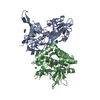

 PDBj
PDBj

















